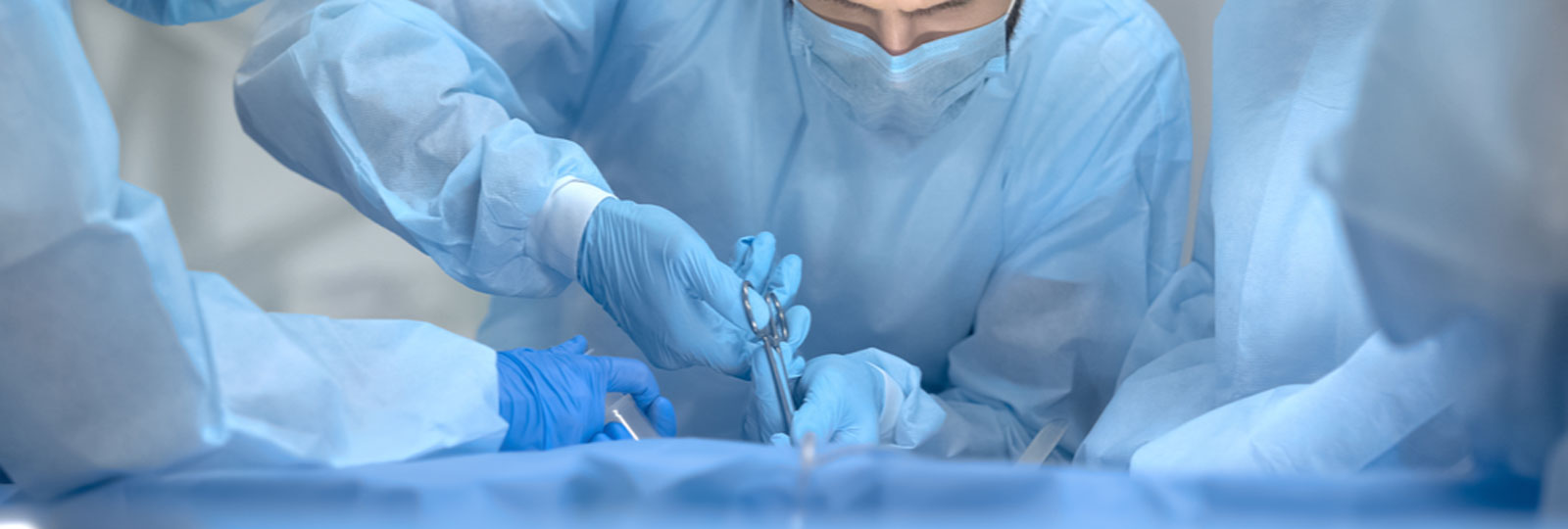
A surgical site infection (SSI) is a type of healthcare-associated infection (HCAI) in which a wound infection occurs after a surgical procedure.
SSIs are one of the most common HCAIs, accounting for around 16% of all HCAIs in England, and are a major cause of increased length of hospital stays, morbidity, and mortality. When a person has invasive surgery, the chances of developing an SSI are around 5%.
How are SSIs caused?
There are a number of ways SSIs can be caused:
Endogenous infection
The majority of SSIs are caused by an endogenous infection, which is when the incision becomes contaminated with microorganisms derived from the patient’s skin or from an opened internal organ.
Exogenous infection
Exogenous infection occurs when external microorganisms contaminate the operative site during the procedure. Sources include surgical instruments, the theatre environment and the air. External microorganisms can also contaminate the wound at the time of incident, or gain access to the wound following surgery, before the wound has healed.
Other causes of SSI
More rarely, SSIs can be caused by a distant source of infection within the body. In this instance, the microorganisms from the infection attach to a prosthesis or other artificial implant within the operative site. This is often referred to as haematogenous seeding or spread. In prosthetic surgery involving an artificial implant, the presence of the foreign body can increase the risk of SSI.
These prosthetic infections are biofilm-correlated as they are highly resistant to antibiotic treatment. This is why antibiotic cements and antibiotic-coated implants are applied, as it helps to reduce the risk of prosthetic-related infection by slowly releasing antibiotics.
SSI risk factors
Operations on parts of the body that are normally sterile have relatively low rates of SSI, generally less than 2%. These are called ‘clean wounds’ because they are not inflamed or contaminated and don’t involve internal organs.
With operations in ‘contaminated’ or ‘dirty’ sites, SSI rates can exceed 10%. When operating on an internal organ there may be a spilling of contents from the organ in the wound, and this is known as a ‘contaminated wound’. A ‘dirty wound’ is a wound in which a known infection is present at the time of the surgery.
Other risk factors for SSIs include:
- Having surgery that lasts more than 2 hours
- Having emergency surgery
- Having abdominal surgery
- Having other medical problems or diseases
- Being elderly
- Being overweight
- Smoking
- Having cancer, a weak immune system or diabetes
Symptoms and diagnosis
SSIs are defined using a set of standard clinical criteria according to whether they affect the superficial tissues (skin and subcutaneous layer) or the deeper tissues (deep incisional or organ space).
Any SSI can cause redness, delayed healing, fever, pain, tenderness or swelling. Those that affect the superficial tissue may produce pus from the wound site. Those that affect deeper tissues may also produce pus, but because it is deeper the wound site may reopen on its own or have to be re-opened by a surgeon.
How can SSIs be prevented?
Most SSIs are preventable by applying measures at the point of pre, intra, and post operative phases of care.
SSI prevention practices include:
- Washing of the patient prior to surgery to remove/reduce the number of microorganisms that normally colonise the skin
- The use of prophylactic antimicrobial therapy to prevent the multiplication of microorganisms at the operative site
- Enhancing the patient’s infection defences by minimising tissue damage and maintaining normal core body temperature (normothermia)
The NICE Surgical site infection: prevention and treatment guidelines (last updated April 2019) provide more detailed recommendations for the prevention and management of SSIs.
In the preoperative phase, in addition to advising the patient to bath or shower on the day of or day before the surgery, patients should also be given specific theatre wear that is appropriate for the procedure and clinical setting. Patients having clean surgery, clean-contaminated surgery or contaminated surgery should also be given antibiotic prophylaxis.
All staff should wear specific non-sterile theatre wear in all areas where operations are undertaken and keep their movements in and out of the operating area to a minimum.
In the intraoperative phase, staff are required to maintain good hand hygiene and the use of gloves. And in the postoperative phase, wounds should be cleaned with sterile saline for up to 48 hours after surgery and an aseptic non-touch technique for changing or removing surgical wound dressings.
Following any surgery, the theatre should also be decontaminated to prevent the spread of any infection to the next patient. Specialist automated decontamination technologies can make this process quick and efficient, minimising downtime between procedures and optimising safety.
SSIs are a common but potentially unavoidable complication following any surgical procedure in which the skin is breached. Complications can range in severity, from wound discharge to more life-threatening infections which can affect the deeper tissues or other parts of the body associated with the surgery. It is important for healthcare staff to implement best-practice recommendations for the prevention of SSIs, such as those outlined in the NICE guidelines.





